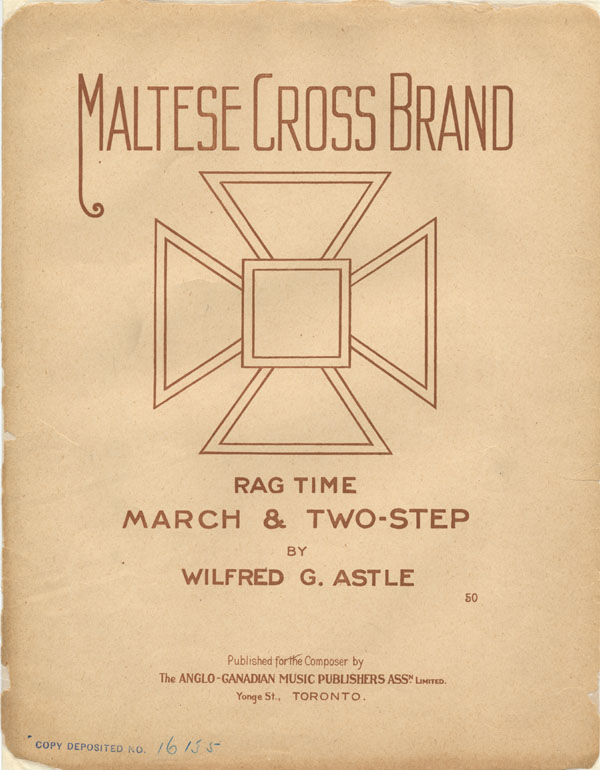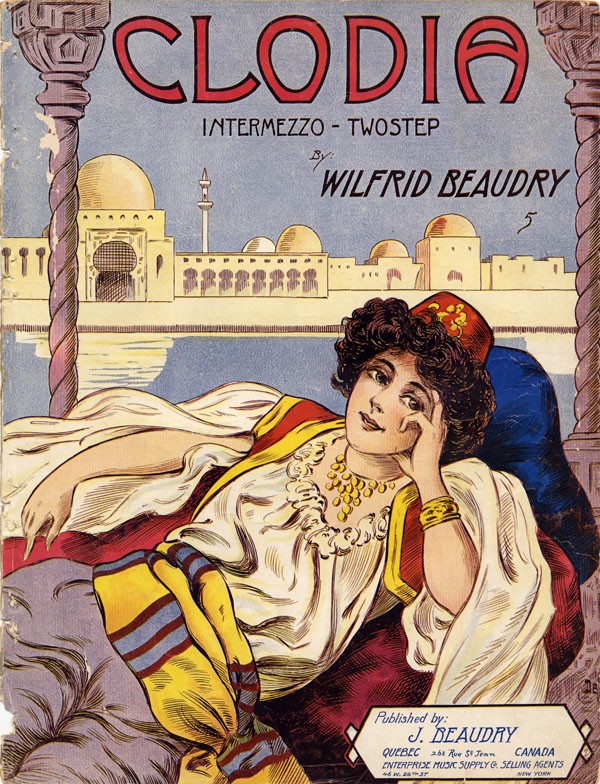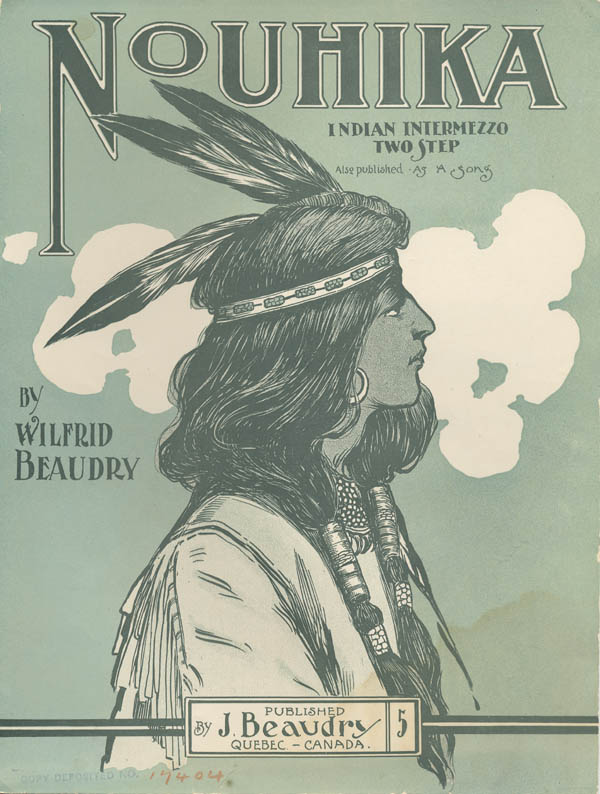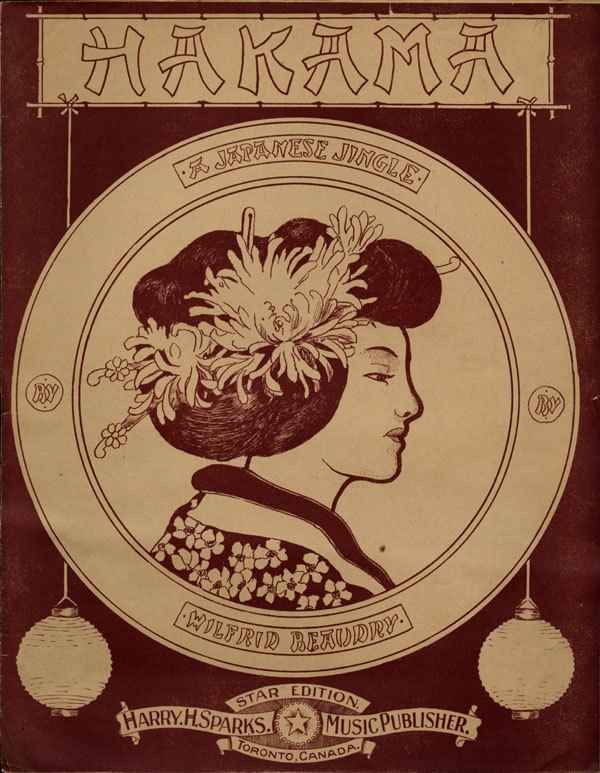|
Ragtime Music in Canada
Chapter 7: Ragtime Sheet Music Art Work
By Ted Tjaden [return to Table of Contents] [go to Chapter 8] Much has already been written about the colourful art work on sheet music from the ragtime-era. Many pieces of sheet music have rich, vibrant colours and fanciful designs. However, many covers also portray stereotypical caricatures of African-Americans (or other ethnic groups) that are quite offensive for most people. Bill Edwards provides an interesting overview on the issue of racial stereotyping present in the cover art for many ragtime pieces (especially page two of his article). Edwards' research on this topic is extremely detailed and highly entertaining, containing many examples of sheet music covers and information about the artists. Rather than attempt to repeat this information, readers should see his article in the preceding links. Instead, in this section, I set out a few preliminary observations I have on Canadian sheet music covers. For more detailed information on Canadian sheet music, see Maria Calderisi's online essay from Library and Archives Canada entitled "Canadian Sheet Music Before 1867." One initial observation in looking at the sheet music covers in the table in Chapter 8 is the relatively large number that have simple brown or off-white covers with little colour or art work (for an example of this, see the cover of The Maltese Cross Brand: Rag Time March and Two Step below):
Although by no means a scientific observation, one wonders whether Canadian publishers were concerned about the cost of producing colour cover sheets or whether there were other factors involved. This is not to say that Canadian-published sheet music of this era was devoid of colour. The cover of Clodia (below) is rich in saturated color:
Other covers portray realistic art or actual photographs of geographical locations – for examples see The Ottawa Rag (below) which has a photo of the Parliament buildings in Ottawa, The Souvenir March and Two Step (below) which has artwork showing Toronto's original City Hall, now a courthouse, and Newfoundland March and Two Step (below) which has a historic photo of St Johns, Newfoundland.
One of my favourite covers is for The Saskatoon Rag (see below) which shows, in vivid colour, a girl skiing with very high mountains in the background. Clearly, the artist is using his or her imagination since mountains like those depicted in the cover art do not exist in Saksatoon!
On the issue of racism in Canadian sheet music covers, there appears to be fewer incidences of overt stereotypes or caricatures. Some of the covers below portray ethnic themes but would not necessarily be considered offensive by even today's standards – see Nouhika: Indian Intermezzo Two-Step (below) for a portrayal of a native Indian and Hakama: A Japanese Jingle (below) and Yokohama March and Two Step (below) for a portrayal of Japanese women.
From the table of sheet music in Chapter 8, the most stereotypical cover art is likely the portrayal of an African-American couple in Raggity Rag (see below).
Set out below is a non-exhaustive bibliography I have created providing more information on sheet music cover art and sheet music generally:
In the next chapter, I set out sheet covers and sheet music for Canadian ragtime music and ragtime-related compositions. |
||||||||||||||||||||||
|
This site created by Ted Tjaden. Page last updated: January 2025.
|









